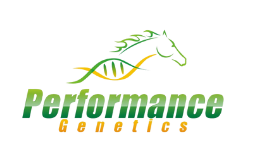Free Webinar
TOMORROW’S CHAMPIONS: DETECT THEM WITH DATA


REPLAY
In this one-hour webinar, you’ll discover how data visualization and analysis may help you predict tomorrow’s winners by empowering your gut feeling.
On your webinar’s agenda:
- How recovery parameters differ with young horses as opposed to fully mature horses
- How works at sub-maximal ~80% effort can also tell you something about ability
- How early may innate stride length/frequency features be identified
Each section will be shown with a real example.
QUESTIONS AND ANSWERS
At what age does the recovery heart rate become reliable ? When you say young horses, what age are you talking about?
We only train 2 year olds during their first season (January to May), thus the data isn’t reliable because it is their first months of training and their bodies have undergone significant physiological changes. We don’t track them after this period, so I don’t have an actual answer. During the early months, it is preferable to use the time to 120 BPM to determine how stressful the work was.
To what extent do you see stride frequency change with age or conditions like going or steepness of gallop/track?
We are attempting to narrow down the variable as much as possible in order to obtain data that can be compared. We pick what distance to go based on the stride length and stride frequency data. If we have a short stride horse, we don’t usually go on an uphill track, such as at the Newmarket auctions. We found that longer stride horses do better at that sale simply because of the way they move. We like to go to flat track events like Doncaster for the shorter stride horses. The frequency of strides changes with age, but only slightly. Like Al Barez, we can see from the data that the horse was always a short striding horse, even if his stride frequency data changed a little.
When are you collecting pre-purchase data? Ie: DNA, ultrasound etc. Is it at the sales or on farms before sale? And how open do you find vendors are to allowing you to collect such data?
We’re gathering information during the yearling sales. We have a machine learning model into which we feed the data and it performs the computations. It takes around 20 minutes. Vendors are aware that we are here to buy horses and they are well aware that we are not fooling about it.
Do you think longer striding horses do better in races at tracks with uphill finishes then? Could we use Arioneo to help with race planning in that way?
Yes I do find longer striding horses are better at uphill finishes, because of the fact that they got to take more oxygen to get faster. I do the Arioneo would help you in that way. Using the data correctly to assess which stride profile you’re horses are and to get to know them better from a physiological perspective as breath and stride frequency rely on each other.
In your opinion, what are the priorities in terms of racehorse health and performance, observed on the field, come with tools such as the Equimetre?
Equimetre, for example, I believe is a terrific instrument for determining whether a job was stressful for a horse. It’s a wonderful indicator for trainers to determine when to reduce and when to boost training workload. We did not uncover any cardiovascular problems in our horses (yet), but the data generated can be very useful in detecting and studying any anomalies.
How do you feel this devise could be best utilized by the US two-year-old in training sale consignors and what information should they pass on the the potential buyer? Have you found if an individual's data isn't great it can hurt the horses final sales price?
Here’s the thing: you can’t hide a bad horse at a 2yo sale. People are taking measurements and watching the horse’s training, so it’s difficult to disguise a bad horse. The only thing people don’t know is how the horse recovered and what the effort was like. We put the Arioneo during the 2-year-old sales. It’s good for us, and it helps us to act as if we know what we’re talking about. More knowledge increases the confidence in what you offer at the sales.
Meet your speakers


